At the Largo di Torre Argentina cat sanctuary in Rome,…

3 Unbelievable Villages in Tuscany Tourists Don’t Know About
It might sound like an exaggeration to say that these three villages in Tuscany, Italy are “unbelievable”.
But they are. Here’s why.
The three villages in southern Tuscany — Pitigliano, Sorano and Sovana — are known as the Città del Tufo. That’s because all of the buildings that line the twisting laneways are built out of a volcanic porous rock called tufa.
Not only that. These aren’t your ordinary hill towns in Tuscany. They’re literally built right into the hill. It’s hard to know where the rock ends and the buildings begin.
They were originally established by the Etruscans, a mysterious civilization dating back to 8 BC. They also carved passageways into the rock to connect the towns and the elaborate rocky tombs they constructed. It was their thing.
These Tuscan villages haven’t changed much since Medieval times. And, even though they’re among the most scenic villages in Tuscany, most tourists haven’t heard about them.
So, you see, it’s pretty unbelievable.
Read on for all the details on what to see in these three beautiful villages in Tuscany, plus where to stay in a medieval castle in Tuscany.
Where are the tufa villages in Tuscany, Italy?
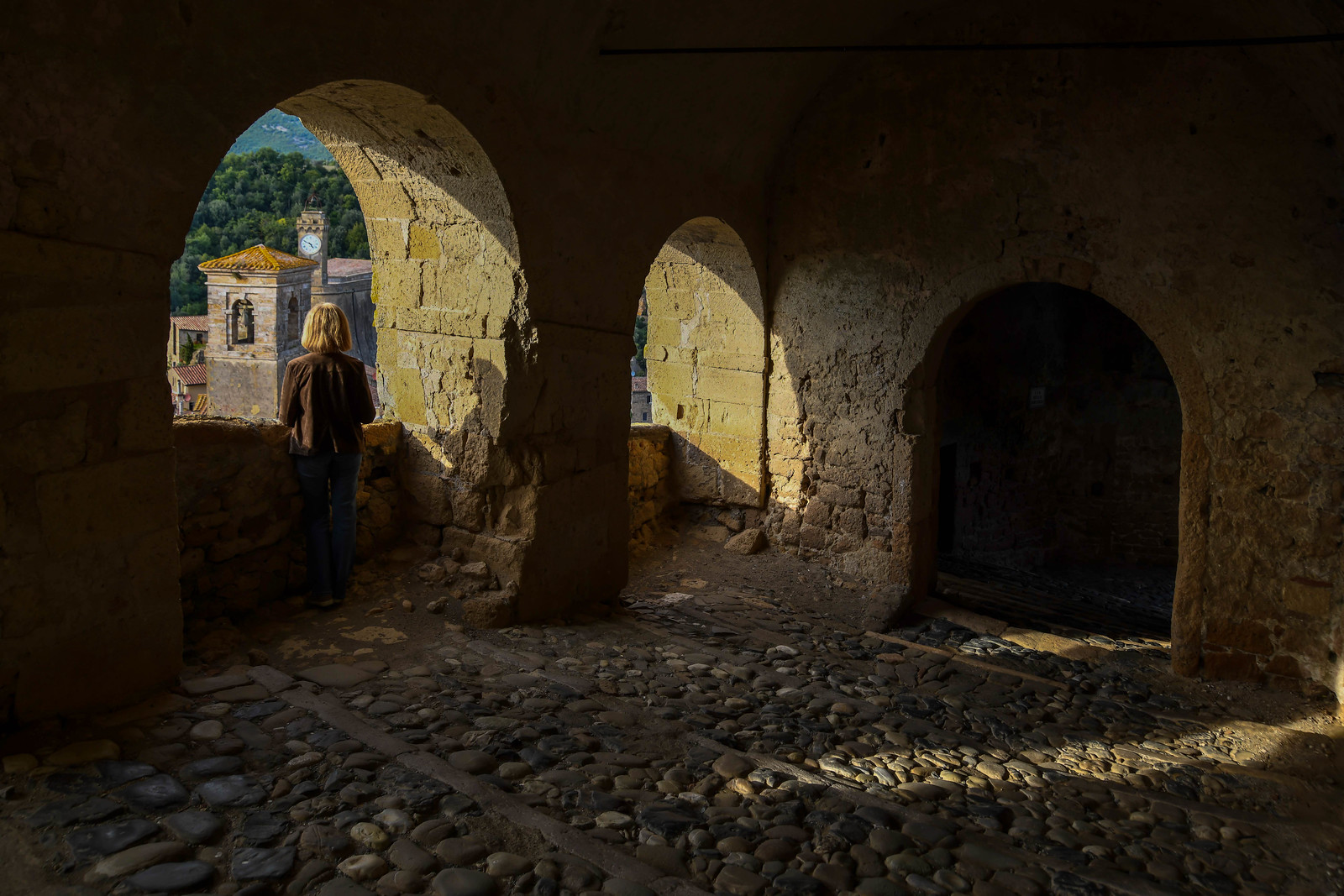
View of Sorano. Image by Rome Photo Fun Tours.
The three picturesque villages are located in southern Tuscany, in a non-touristy region called the Maremma. It’s 80 kilometres from Grosseto or about a two-hour drive north of Rome. (Take the Roma-Civitavecchia motorway, then follow the signs for Grosseto-Livorno, exit at Albinia, and follow the signs for Manciano and then for Pitigliano).
The nearest major train station is Grosseto, and from there you can take a bus to reach the area. But, I would recommend getting there by car so that you can explore the countryside in the area. Each village has parking at the edge of town and you can easily explore them on foot.
I typically use Auto Europe to find good prices on car rentals.
In this case, I visited the best places in Maremma on a photography tour with Rome Photo Fun tours, which took care of the transportation.
Pitigliano, one of the best places to visit in Tuscany

This unique view of Pitigliano, arising from the rock cliff, makes it one of the most beautiful villages in Tuscany.
The town can trace its roots back 3500 years. Ruins in the area date back to the Etruscans, but as you stroll through the ancient, narrow streets, you’ll feel the medieval influences of the powerful Italian families that shaped this area.
Photo Tip:
Here are two great vantage points to take photos of Pitigliano:
- The photo above was taken from the Strada Regionale 74 Maremmana near the Sanctuary of the Madonna delle Grazie. There is a place to pull off on the side of the road for this sweeping view directly across from Pitigliano.
- As you head into town via SR74, stop at Via San Michele 132 in the newer part of the village for a view of the length of the old village. The photo at the top of this post was taken from this spot.
Things to do in Pitigliano, Italy
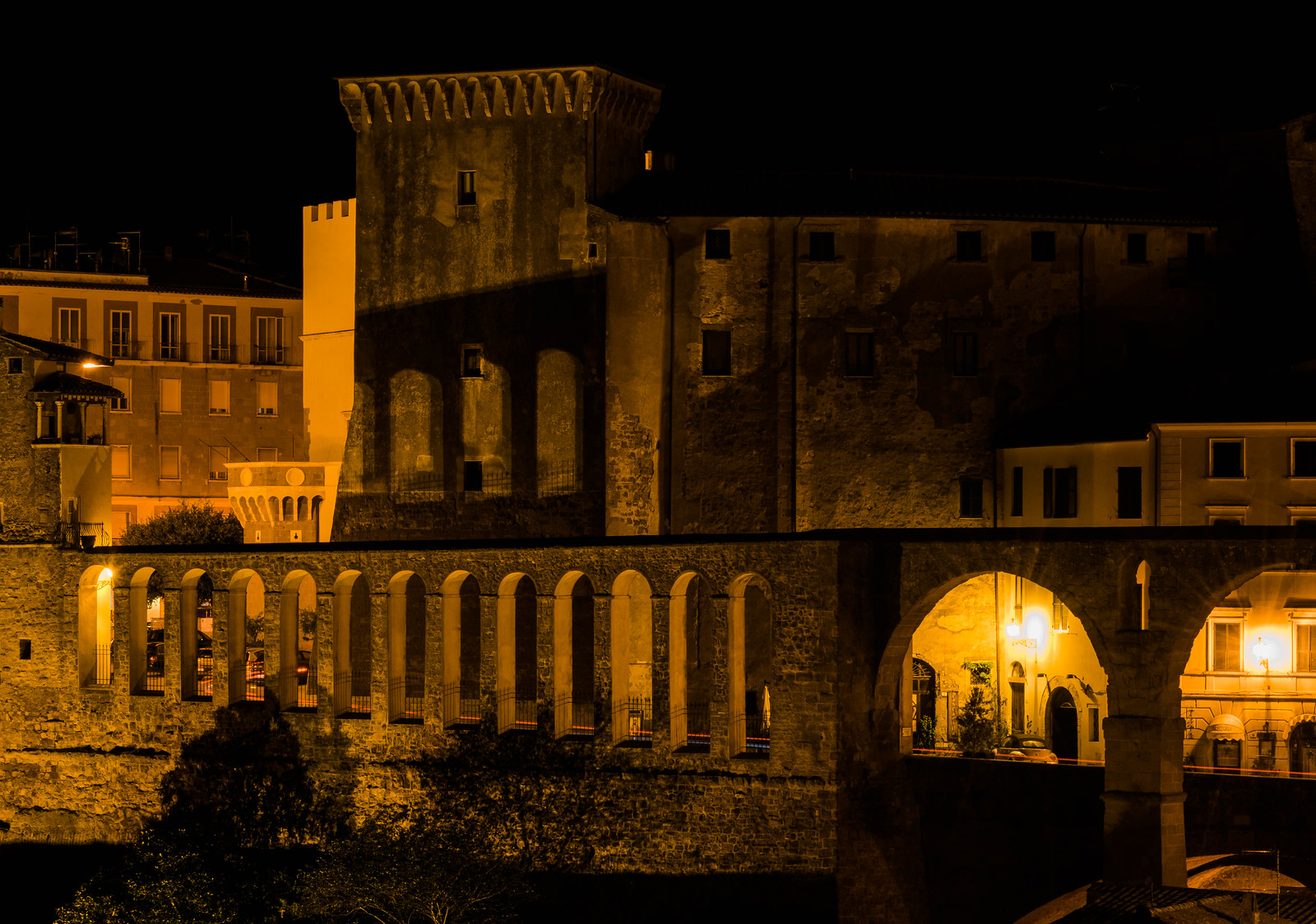
The best things to do in Pitigliano and the other tufa towns of Tuscany are to explore the winding alleys and stairways and soak in the medieval magic.
But, as you wander, there are some things you shouldn’t miss.
As you enter Pitigliano, you’ll see one of its most striking architectural features, the aqueduct (acquedotto mediceo). Construction on the aqueduct began in the 16th century to improve the water supply to the city. The 13 tall arches make it look more like a bridge than a water system. Located on Piazza della Republica, it’s a great spot overlooking the countryside.
A 14th century fortress, the Palazzo Orsini, is also near the town’s entrance. It’s now a museum housing artworks, Etruscan artifacts and a medieval torture chamber.
The Jewish Ghetto in Pitigliano
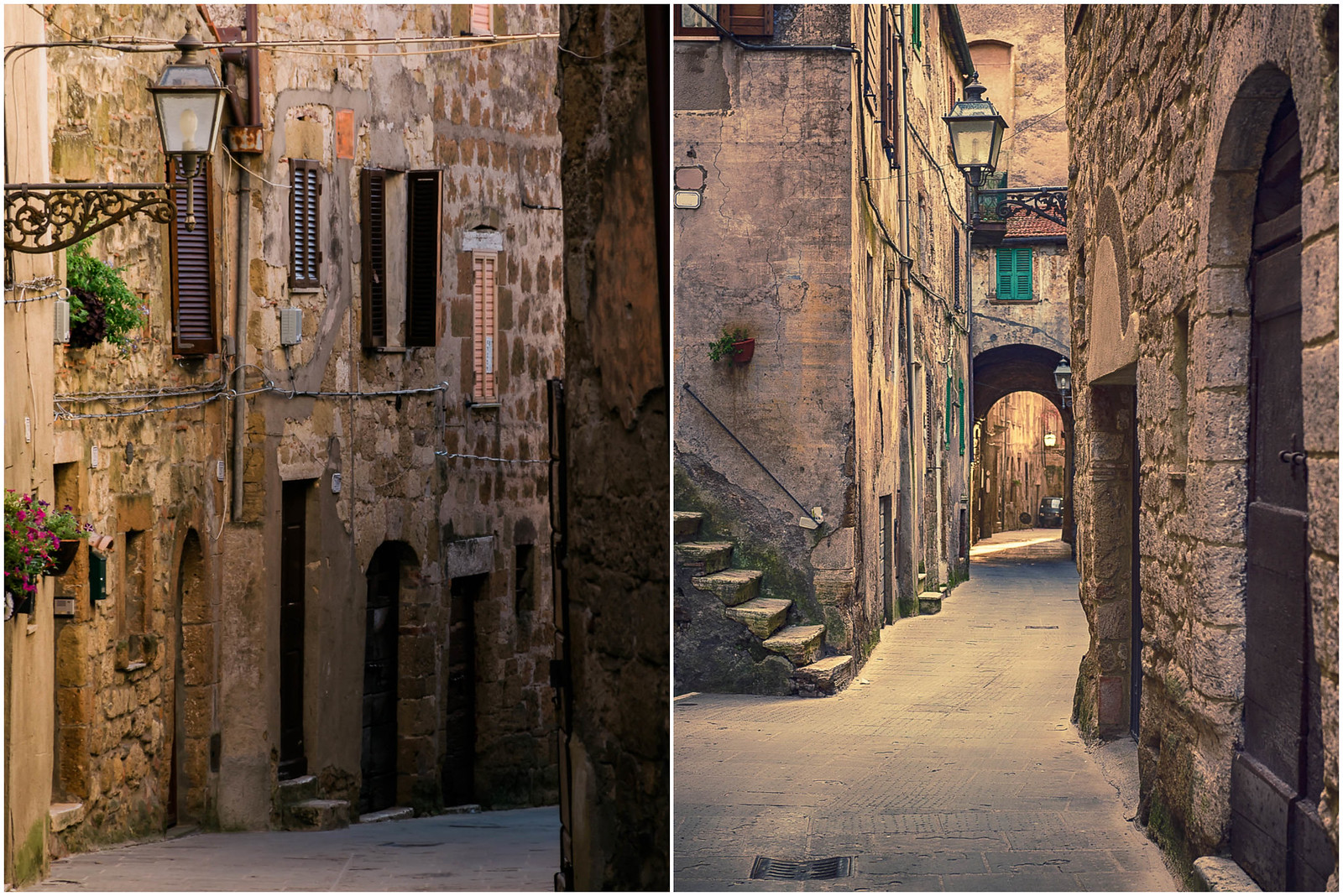
Now, enter the labyrinth of little streets and archways. If you follow Via Roma, you’ll eventually come to the small Piazza Gregorio. Here, you’ll find a massive cathedral dedicated to Saints Peter and Paul. The artworks inside are worth a look.
Behind the cathedral, along via Zuccarelli, you’ll find yourself in Pitigliano’s famous Jewish ghetto. This became a refuge in the 1500s for Jews who were expelled from other parts of Italy. The community flourished and Pitigliano became known as “Little Jerusalem”. It hasn’t changed much since that time. Stop in at the synagogue where you’ll see rooms carved into the rock that were used for the kosher butcher and a wine cellar.
Finally, keep walking to the edge of the village, where you’ll see these amazing ancient stairways on Viccolo Antico Pretorio and more stunning views of the valley from Piazza Becherini.

Where to eat in Pitigliano
A good restaurant featuring local specialties is Il Tufo Allegro (Vicolo della Costituzione 5). Try the pappardelle pasta with wild boar sauce. Also, while in the area, be sure to taste Bianco di Pitigliano, a fresh white wine produced from the vines that thrive in the tufa soil of this area.
Bliss tip: Find out about another gem in Tuscany off the tourist track, in this post about Monte Argentario.
Sovana, a Tuscan village frozen in time

The tiny town of Sovana was also built on a cliff by the Etruscans around the 7th century BC. It was rebuilt by the powerful Aldobrandeschi family in the middle ages and you’ll see the ruins of their castle as you arrive in this well-preserved village.
Things to do in Sovana, Italy
While this Tuscan town is considered to be one of the prettiest villages in Italy, you won’t need more than a few hours to visit it. It’s really made up of only two streets.
In the Piazza del Pretorio, you’ll see the elegant facade of the 13th-century Palazzo dell’Archivio, with its large clock and bell at the top. On the left is the Church of Santa Maria.
On the opposite side of town, don’t miss Sovana’s main monument, the Cathedral of San Pietro. It was commissioned in the 12th-century by Pope Gregory VII, who was born in Sovana. With its rib-vaulted ceiling, it’s one of the most important Romanesque-Gothic buildings in Tuscany. The Cathedral is open to visitors (for a small entrance fee) from April 1 to October 31 from 10 a.m. to 1 p.m. and 2:30 p.m. to 7 p.m.
The area around Sovana is known for its Etruscan ruins and tombs. Not far from Sovana and Sorano, you can see some of the best preserved ones at the Parco Archeologico Città del Tufo.
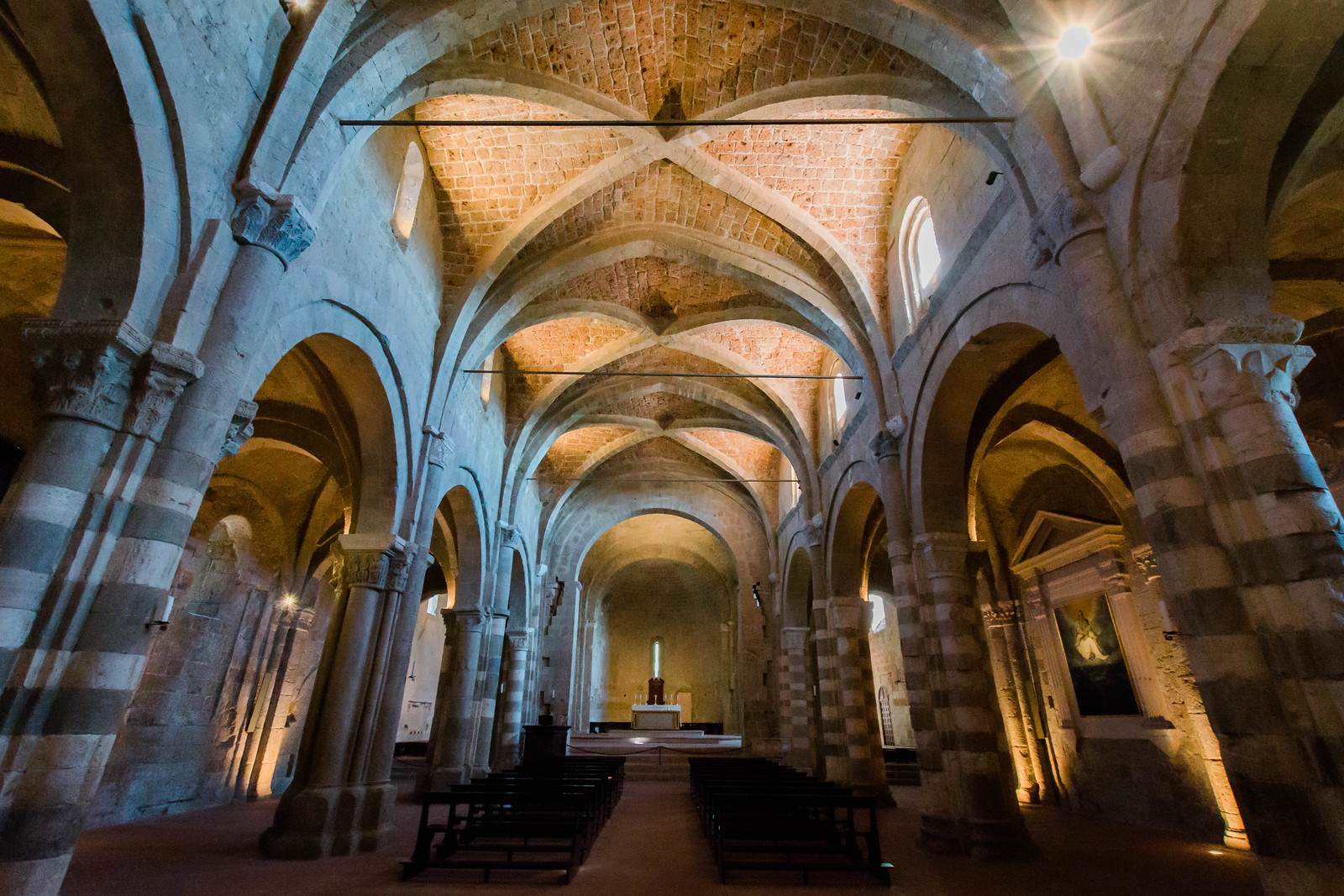
Where to eat in Sovana:
On the main street in Sovana, there’s a cute cafe and wine bar called Vino al Vino. It has good coffee, cakes, wine and tasting plates of local produce, as well as a few vegetarian choices.
Sorano, a beautiful hill town in Tuscany
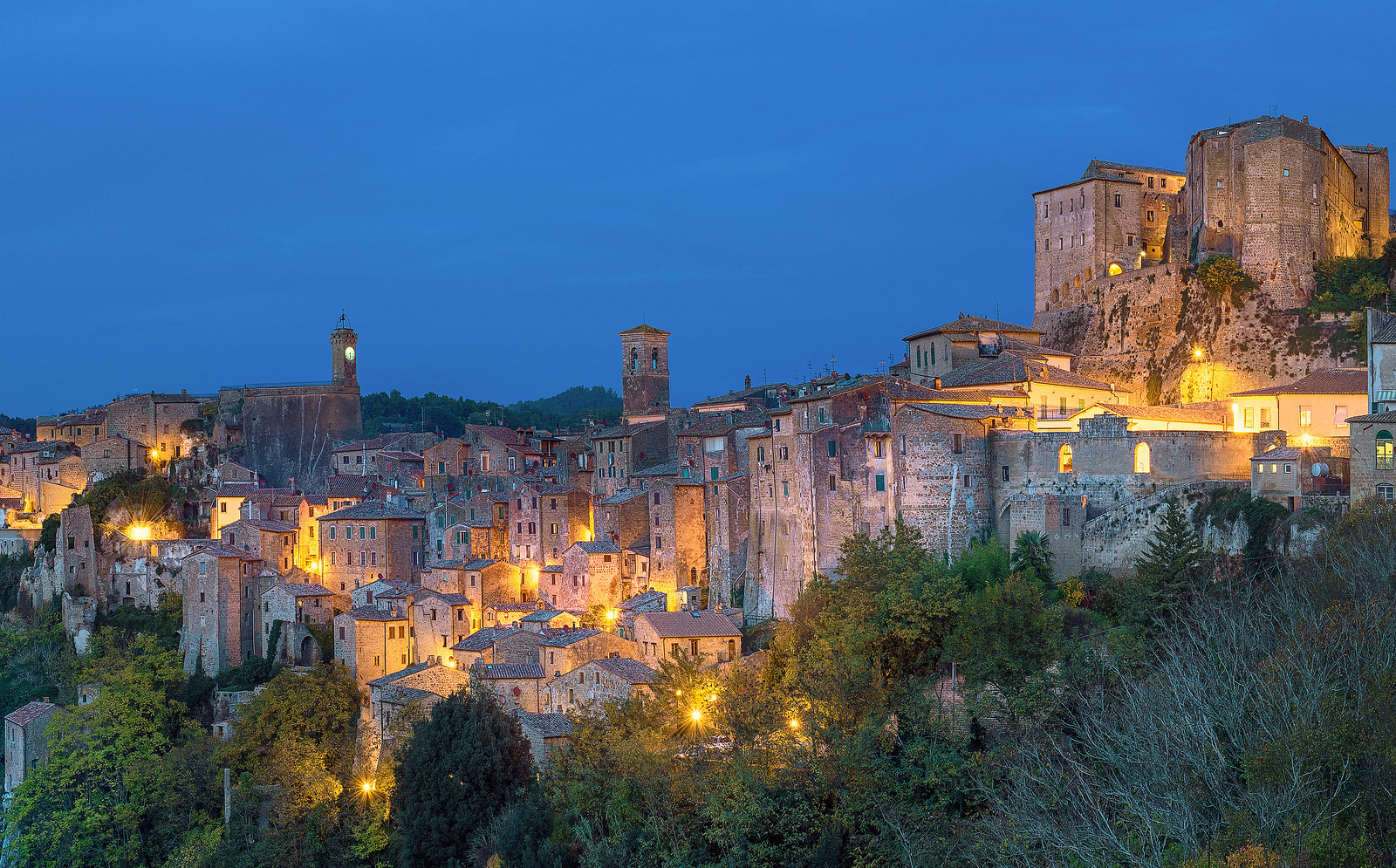
With its ruggedly tall buildings perched on a cliff, Sorano has been called the Matera of Tuscany. The village flourished in the Etruscan age, and was later refined and fortified during the Renaissance. It’s one of Maremma’s most impressive cities, with a genuinely prehistoric atmosphere.
Things to do in Sorano, Italy
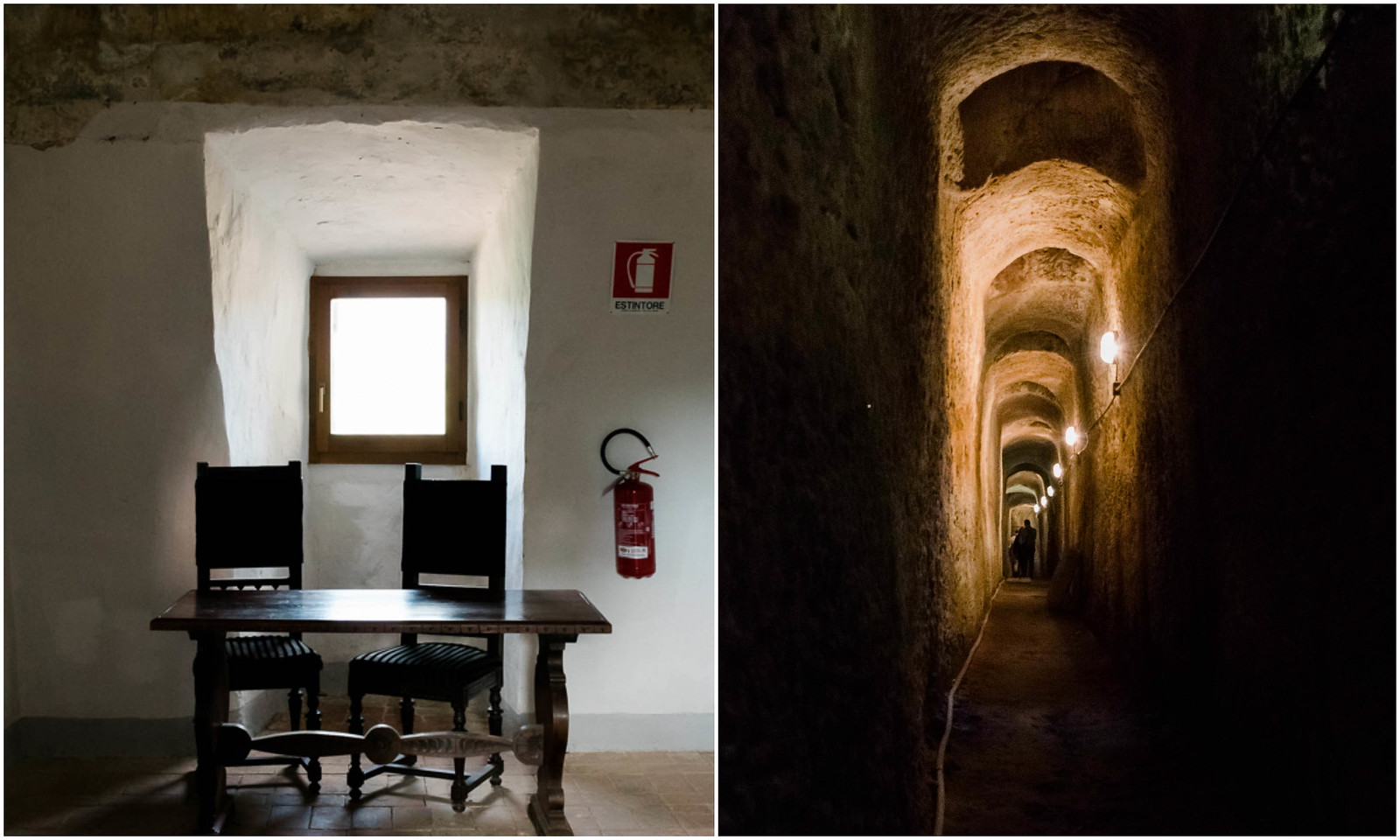
One of the fascinating things to do in Sorano is to visit the massive Orsini Fortress (Fortezza Orsini) and Medieval Museum which stands as a sentinel over the town. It’s considered to be one of the most detailed examples of Renaissance military engineering in Italy. It was built back in the day when soldiers used ingenious defence mechanisms like dropping boiling water and glass through trap doors on to invaders.
You can take a guided tour of the fortress, which includes a walk through the underground passages used to deploy troops. Here, you’ll see the slits in the walls for shooting and ventilation holes to disperse toxic smoke from weapons. The tour times vary, so check here for the details if you want to visit.
Want to get even more medieval? You can also stay in the castle inside the fortress. More on that below!
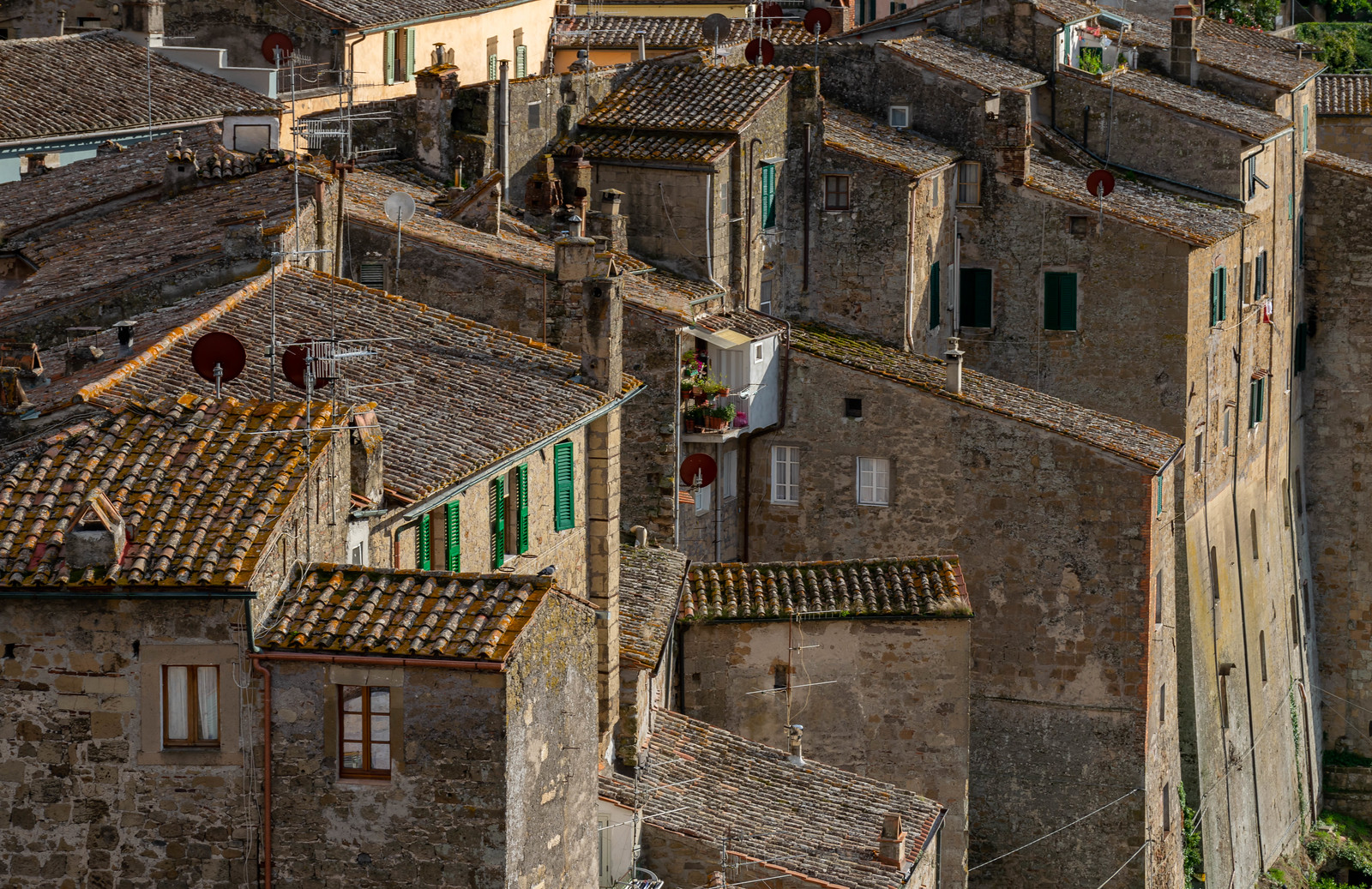
View of Sorano houses from the Masso Leopoldino
Don’t miss the view from Masso Leopoldino, another fortress at one end of town. It’s an incredible vantage point to take in the town and the valley below.
You may also want to stop by Chiesa di San Niccolò in Piazza Busatti, the favourite church for Sorano residents. You can see its bell tower above most of the buildings in the village. Finished in 1509, it took 200 years to build the church. Although some of its details were lost in renovations, the striking artwork inside is still worth a visit.
Once you’ve seen those must-sees, take an afternoon to explore the nooks and crannies of medieval Sorano.

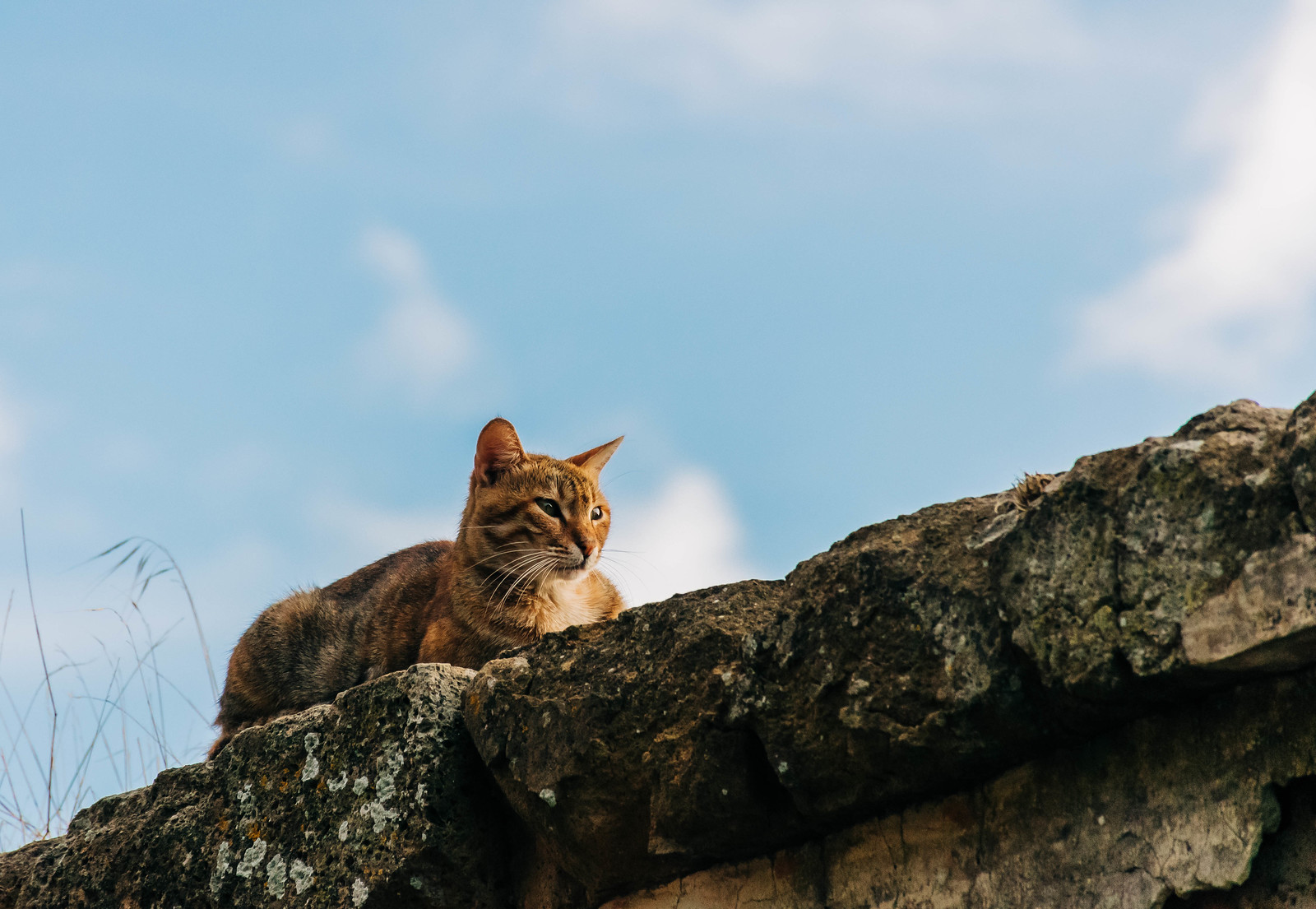
Meet the friendly locals in Sorano.
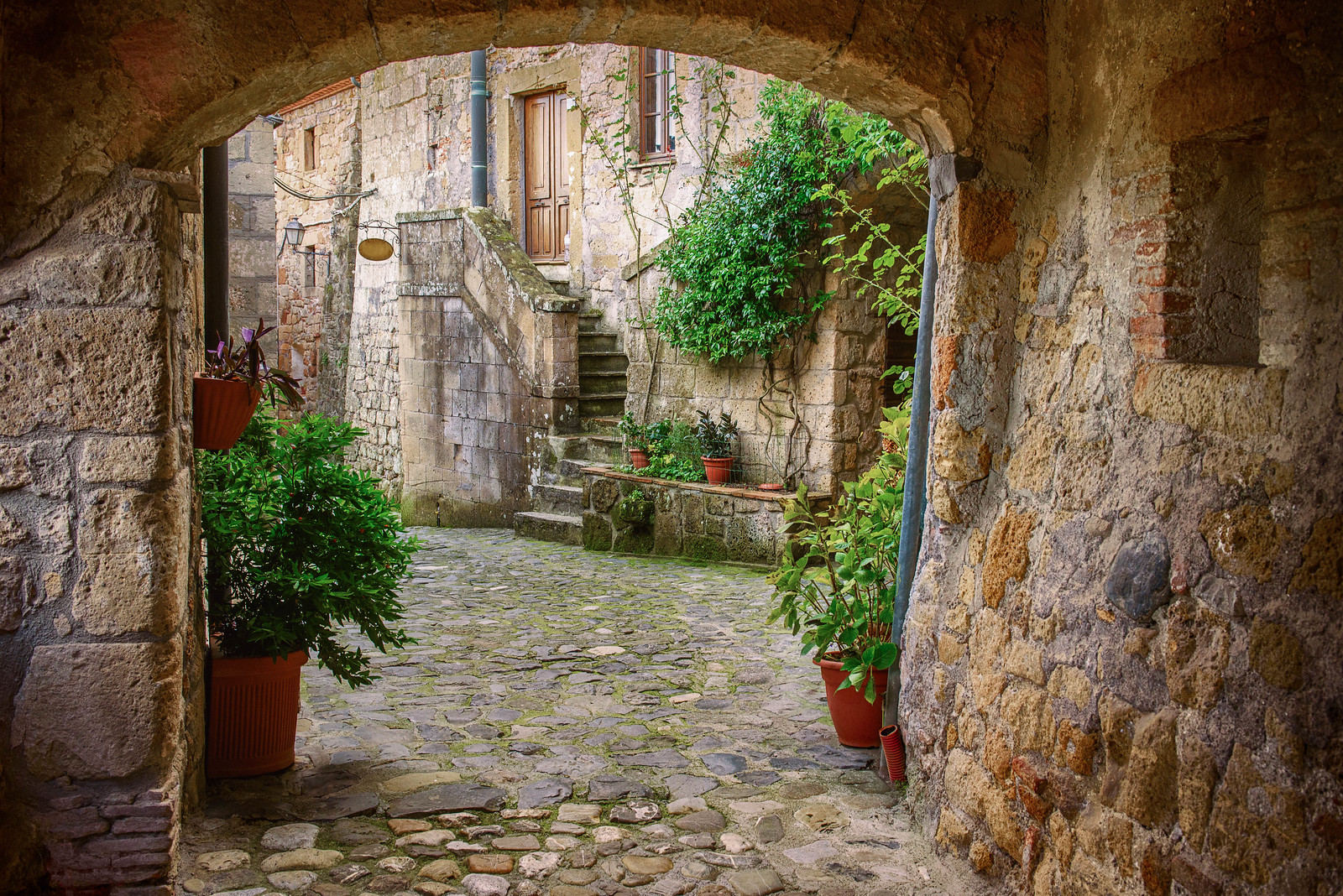
Where to eat in Sorano
Once you’ve wandered through the village, enjoy homemade pasta and local Maremma dishes (lots of meat) at Fidelma. It’s located at Piazza Pietro Busatti 5.
Hike the Vie Cave from Sorano
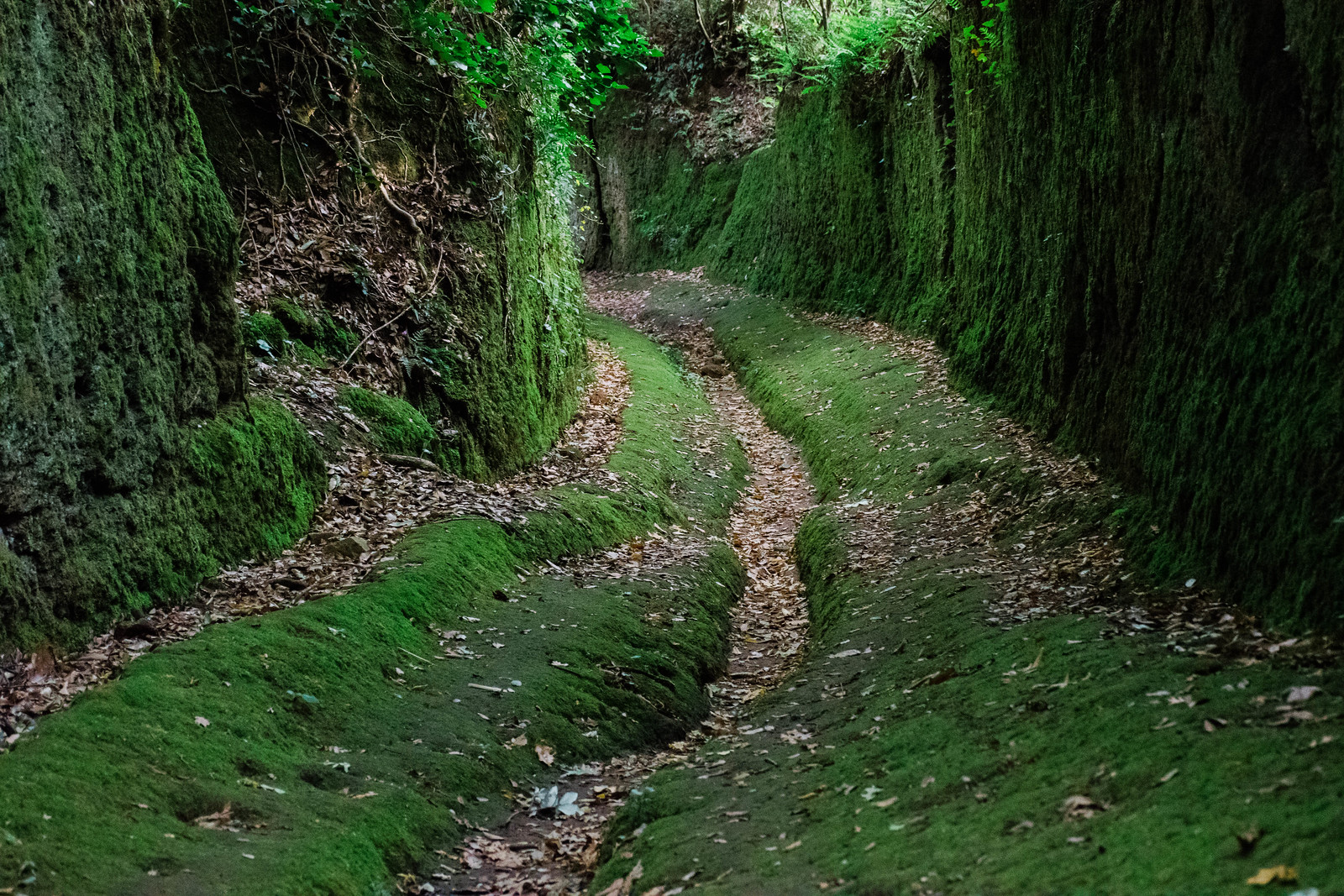
Your visit to the Tufa villages in Tuscany wouldn’t be complete without a walk through the Vie Cave, which translates to “sunken roads”. These are the paths carved through the stone hills by the Etruscans. In some places, the stone walls are more than 20 metres high.
No one know for sure why they created the paths. They connect the three villages, and also lead to ancient tombs. Or the routes may have helped to avoid enemies.
In any case, the paths create a magical and lushly green atmosphere for a hike. It is like entering a different and mysterious world. One place to join the trail is at Via Cava di San Rocco near Sorano. Start at the viewpoint known as the Insediamento Rupestre di San Rocco. You can follow the path for two kilometres to an Etruscan burial site. Another option is to pick up the trail at the Archaeological Park Città del Tufo,
Stay in a castle in Tuscany
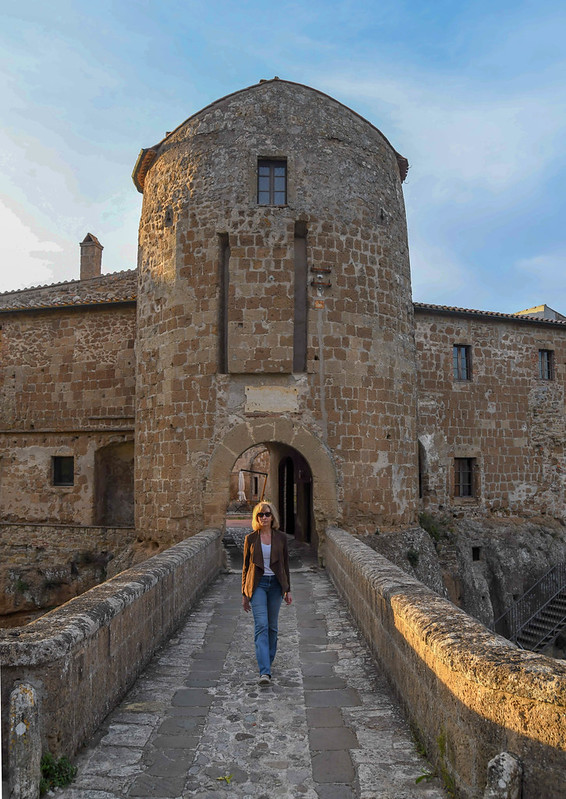
Image by Rome Photo Fun Tours
For a unique experience, the best place to stay while you’re exploring the middle ages is in Sorano’s Orsini fortress itself. When you cross the medieval drawbridge over the dry moat, you’ll arrive at the courtyard of Hotel della Fortezza, inside the fortress.
You’d be hard pressed to find a more original and authentic experience. You’ll be staying in the oldest part of this castle in Tuscany. Inside the hotel, you’ll be walking the same ancient floors as the Orsinis did.

A stay at the hotel includes a tasty continental buffet-breakfast in its cozy breakfast room. In Italy, this means lots of cakes! There’s also a selection of local cheeses and meats and fresh fruit juice.
You may also wish to drop into the EnoRistrò in the fortress. There, you can have a tasting plate of local specialties, mostly cheeses, meats and breads dressed with luscious olive oil, along with local wines.
Hotel staff are also happy to arrange activities for you, including a tour of the fortress, a picnic, horseback and e-bike riding, wine tasting or guided tours. There’s even a spooky night walk in the Vie Caves.
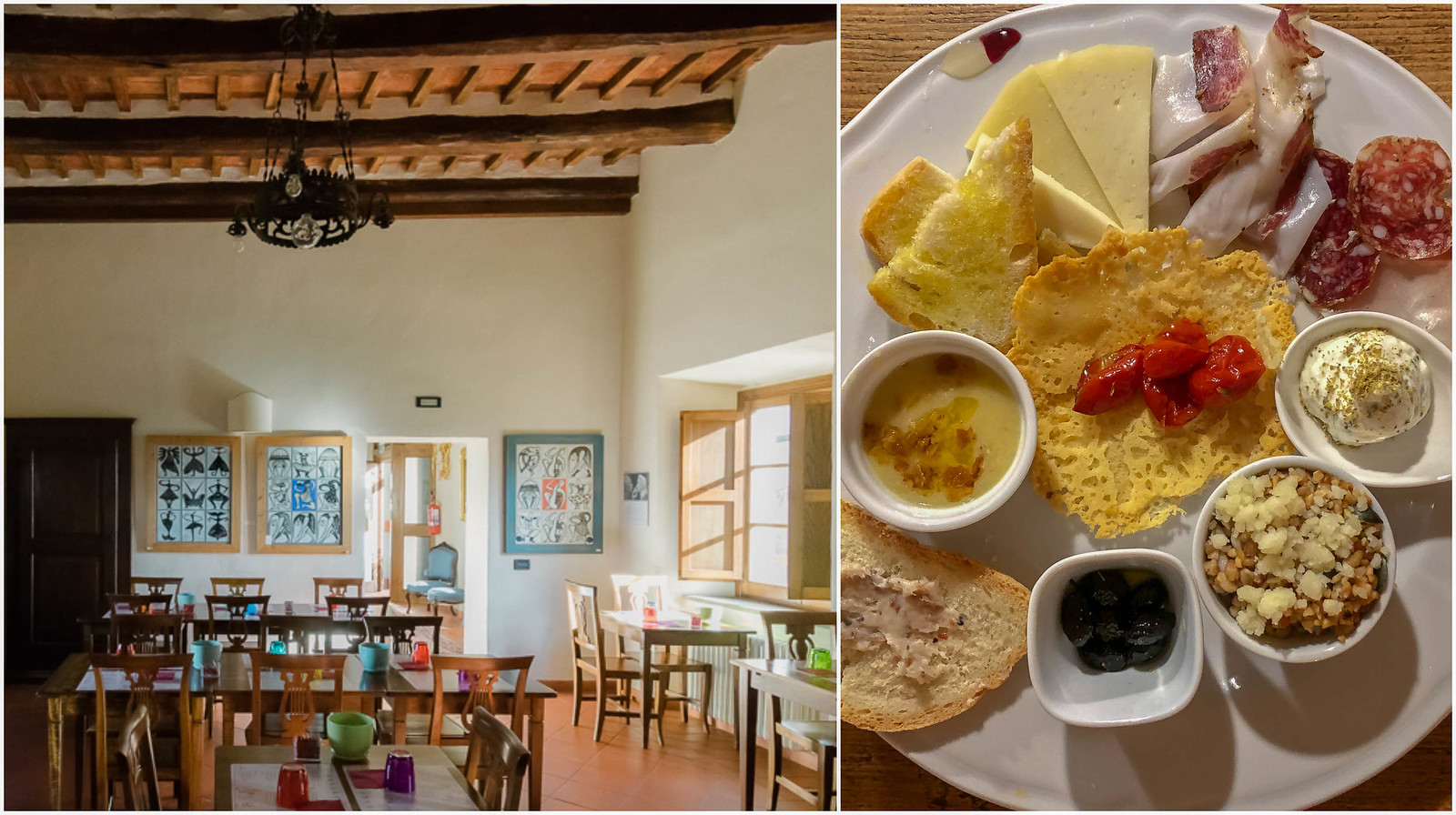
Rooms in the Tuscany castle – Hotel della Fortezza

The rooms of Hotel della Fortezza are decorated with original 19th-century furniture. My room had rustic tiled floors and a wrought iron headboard on the comfy bed. Some rooms also have 16th-century frescoes on the walls and exposed wooden beams on the ceiling.
The most amazing part of this medieval hotel experience was the view from my window. I awoke to the sound of church bells ringing over the red roof tops, feeling as if I had, indeed, woken up in another era.
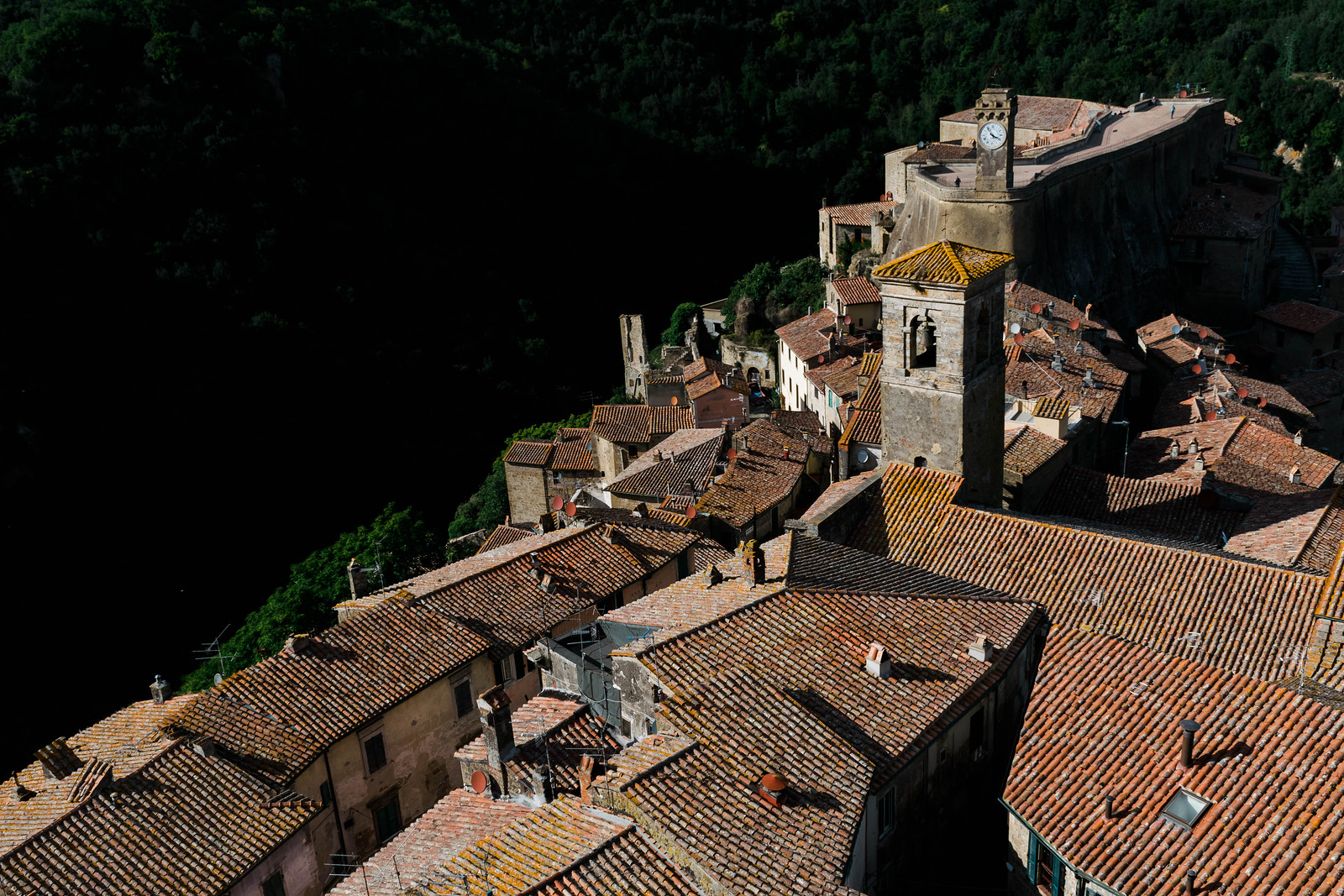
More Information:
Check availability and prices at the Hotel della Fortezza in Sorano.
Car rental: Auto Europe
Tourism Information: Visit Tuscany, Discover Italy
Suggested Reading:Rick Steves Florence & Tuscany, Lonely Planet Florence & Tuscany (Travel Guide)
, Under the Tuscan Sun: 20th-Anniversary Edition
Avoid data roaming fees: I use an aloSIM eSIM (a digital SIM card) to stay connected when I travel. Get 5% off your first order with the promo code: TRAVELBLISSNOW.
Travel Bliss Now was a guest at the Hotel della Fortezza, but my opinions are entirely my own.
Pin it:
How to Eat Like a Local in Florence
The Chianti Wine Tour You Can’t Miss
This Dreamy Tuscan Spa Resort is the Ultimate Place to Relax







Great locations
Thanks Nancy! I thoroughly enjoyed them.
Beautiful photos. I like that you mention the photo tours you’ve been on and would like to read your views of them.
Hi Suzanne. Thank you and sorry for my slow response (technical glitch). I’ll be writing more about the photo tour in Tuscany as travel resumes. I did the Tuscany tour with Rome Photo Fun Tours, and you can see my post on his tour in Rome at https://www.travelblissnow.com/rome-photography-tour/
Excellent information. Thanks! Hopefully, the covid plague will end soon so we can make a new sojourn to Europe!
Thanks George. I hope so too!
Yes! We went to Pitigliano and Sorano. Just quick day trips. Pitigliano is beautiful at night wish we would have stayed around for that. I had one of my most favorite meals there. Sorano was also an incredible find. I don’t think there were many other tourist there when we were there.
Great post and I agree!! Beautiful.
Thanks so much Amy. I stayed two nights in the castle in Sorano, but would love to spend more time there too.
I almost never left.
Wow – the Vie Cave looks absolutely stunning! It’s crazy how these places make you feel like you’ve stepped back in time.
It definitely feels like another era in these villages. The Vie cave is amazing, with lots of hiking options.
What a beautiful article. Thank you so much
Thank Ann. I’m so glad you enjoyed the post!
Can’t wait to go. We haven’t had a proper vacation since Covid struck. I happened up on your site and got that excited, about to go to Europe feeling. And what an area to begin. You have mapped it out so beautifully, for all of the senses! I think this was the nudge we needed!
D
I’m so glad you were inspired by my blog post! Thanks Dee.
Looking for hidden gems to visit for our next trip to Italy. I’m glad to have found your site.
Thanks Julie. I really enjoyed these villages – – something a little different from the usual.